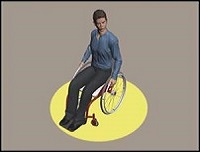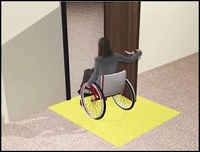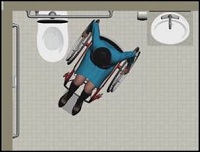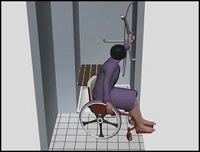Barrier Free Access
now browsing by category
Posted by: Carl Peters | on September 7, 2014
New Handicapped Accessibility Design Tools
The United States Access Board has prepared computer animations to help designers understand the reasons for the standards that have been established for wheelchair maneuvering, wheelchair maneuvering at doorways, accessible toilet rooms and accessible bathing facilities.
While it is important for designers of handicapped accessibility improvements to follow the code that is enforced in the jurisdictions of their projects, it’s often helpful to know why a regulation exists rather than simply following the letter of the code. I find this to be especially important when trying to retrofit existing buildings to make them accessible for wheelchair users.
These videos can be also helpful for building owners who wish to improve the handicapped accessibility of their homes or businesses but are concerned about costs and don’t wish to embark on a project which is larger and more complicated than absolutely necessary.
Building owners may also benefit by viewing these videos before performing maintenance on their premises. Often, changes made years after a new building has been approved and occupied (e.g. non-compliant faucets, door hardware, toilet paper and towel dispensers and objects places in required floor spaces) render it inaccessible. Owners of commercial buildings that fail to be in compliance with the standards set forth in the Americans with Disabilities Act are open to being sued and may be responsible to pay the costs of legal and expert witness fees along with the cost of fixing the problem.
If you are interested in watching the computer animations prepared by the U.S. Access Board, simply click on the highlighted text.
Please let me know if you find this information helpful.
Wheelchair maneuvering at doorways,
Accessible bathing facilities.
Posted in Barrier Free Access, Construction Codes, The Peters Perspective | Comments Off on New Handicapped Accessibility Design Tools





 D5 Creation
D5 Creation